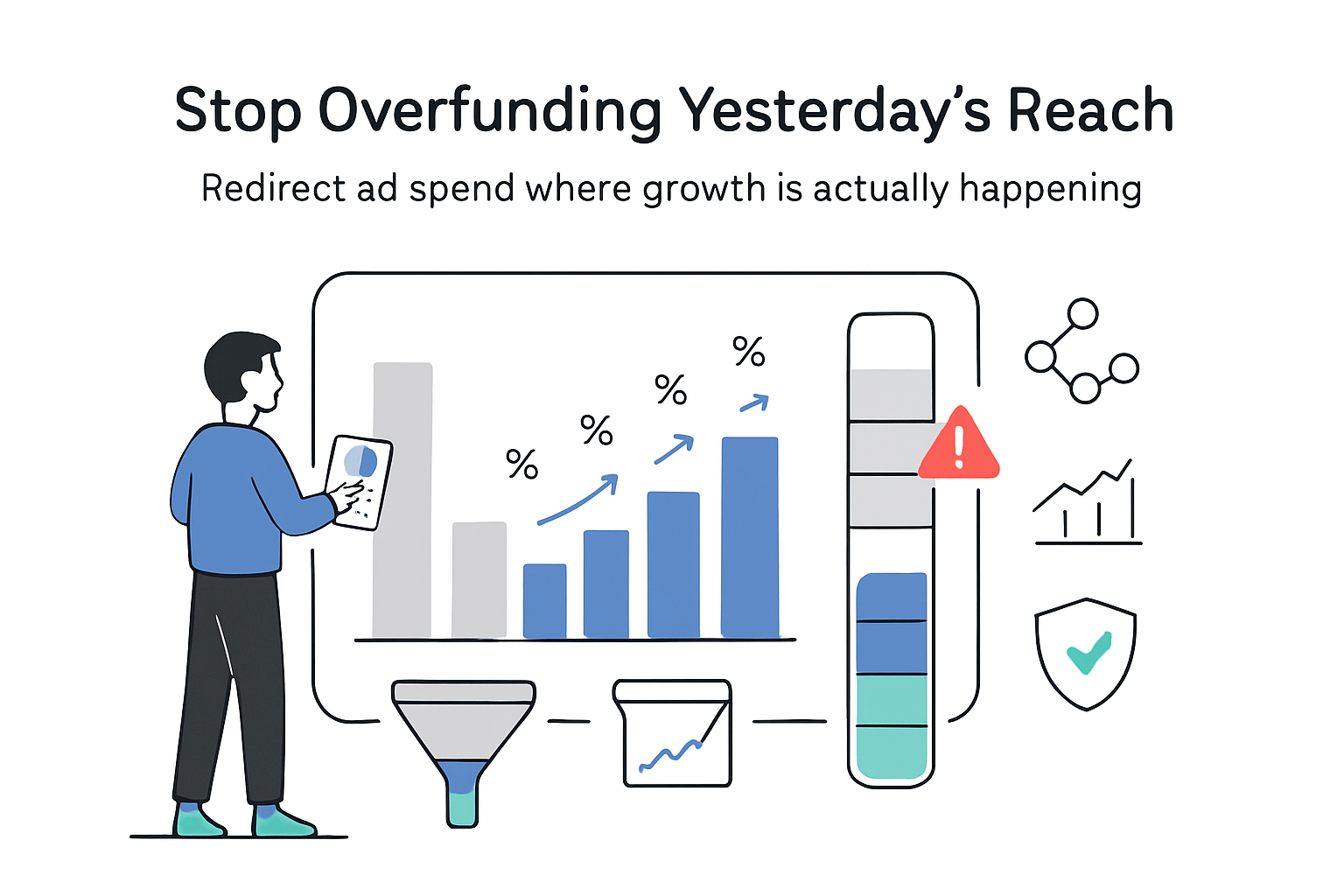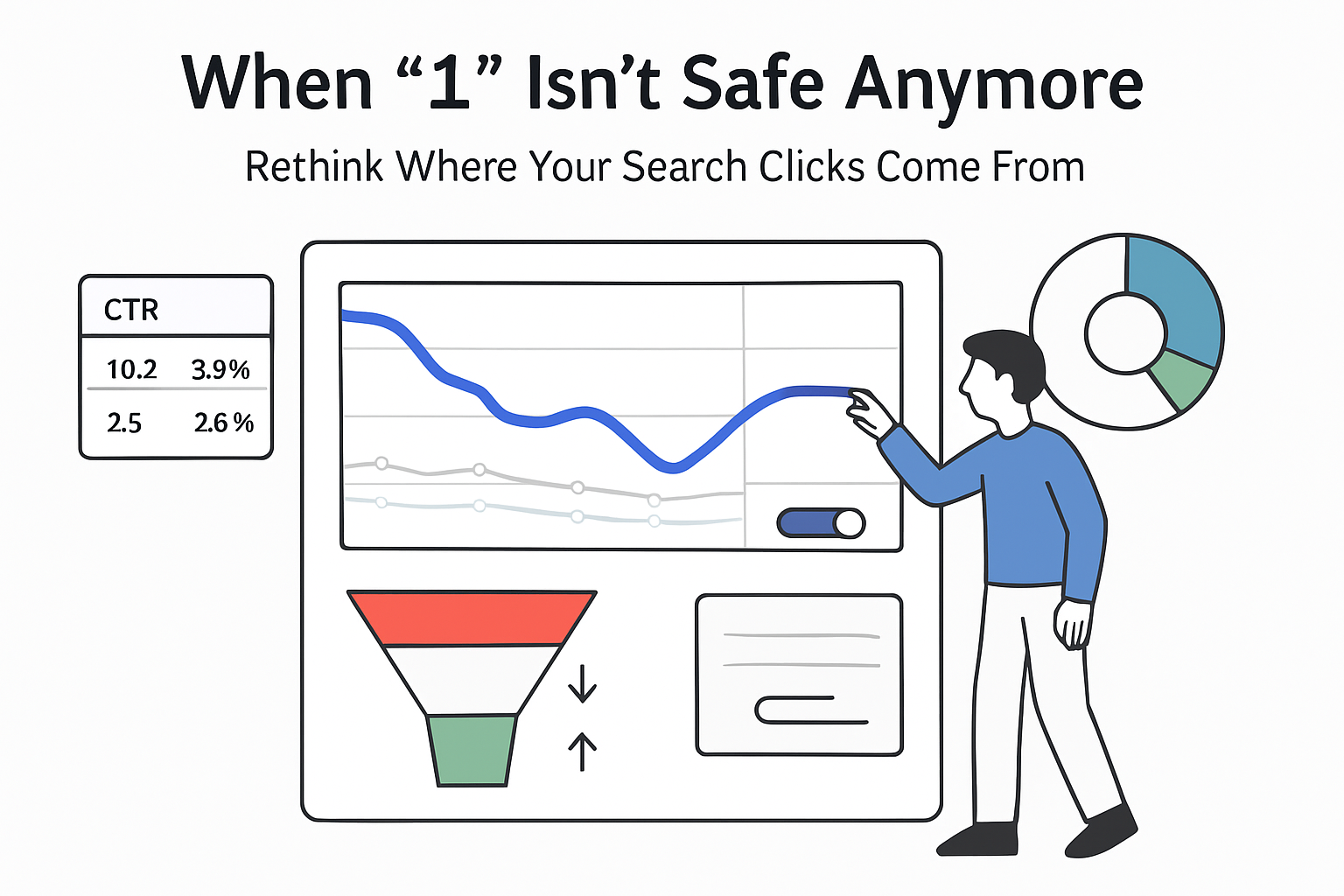Pew 2025 Social Media Study: 84% of U.S. Adults Use YouTube
Pew Research Center's new data for 2025 show that YouTube and Facebook remain the only truly mass-reach social platforms in the U.S., while TikTok, Instagram, WhatsApp, and Reddit continue steady growth from smaller bases. Adoption and usage patterns vary sharply by age, gender, and education, with direct implications for channel planning and audience targeting.

Executive Snapshot: 84% of U.S. Adults Use YouTube in 2025
- 84% of U.S. adults report using YouTube, 71% use Facebook, and 50% use Instagram - the only three platforms with adoption at or above 50% of adults. [S1][S2]
- TikTok usage has climbed to 37% of adults, up from 21% in 2021; WhatsApp from 23% to 32%; Reddit from 18% to 26%; Instagram from 40% to 50% over the same period. [S1][S2][S3]
- Daily usage is highest for Facebook (52% of adults, 37% multiple times per day) and YouTube (48% daily, 33% multiple times). TikTok sees 24% daily use; X (formerly Twitter) sits at 10%. [S1][S2]
- Age gaps are large: among adults 18-29, 80% use Instagram, 63% TikTok, 58% Snapchat, and 48% Reddit; among adults 65+, usage of these platforms ranges from 4% to 19%. [S1][S2]
- Gender and education matter: women over-index on Facebook, Instagram, and TikTok, while men over-index on X and Reddit; college graduates are much more likely to use Reddit (40%), WhatsApp (41%), and Instagram (58%) than adults with a high school education or less. [S1][S2]
Interpretation (Likely) - For most U.S.-focused brands, YouTube and Facebook function as core reach channels, while TikTok, Instagram, WhatsApp, and Reddit are better suited to targeted growth in younger and more digitally engaged segments.
Method & Source Notes on Pew Social Media Use Data
Pew Research Center's 2025 social media report, “Americans' Social Media Use 2025,” is based on a survey of 5,022 U.S. adults that measured platform adoption, visit frequency (including daily use), and basic demographics such as age, gender, and education. [S1][S2] Percentages refer to the share of U.S. adults who say they use each platform, not to monthly active users or ad reach metrics.
Trend comparisons to 2021 (for example, TikTok from 21% to 37% adoption, WhatsApp from 23% to 32%, Reddit from 18% to 26%, Instagram from 40% to 50%) rely on Pew's earlier report “Social Media Use in 2021.” [S1][S2][S3]
Pew typically uses nationally representative samples and probability-based panels for its U.S. surveys, although the detailed methodology for the 2025 wave is not fully described in the excerpt provided. As with prior waves, the data are self-reported: respondents indicate which platforms they “ever use” and how often they visit them.
Key limitations for decision-makers
- Data cover U.S. adults only, not teens or international users. [S2][S3]
- Figures reflect self-reported usage, not observed behavior or time spent.
- The excerpt focuses on a subset of platforms; 2025 adoption data for some important networks (for example, LinkedIn, Pinterest, Snapchat) are not included here, though they have been covered in earlier Pew waves. [S3]
- No information is given on ad performance, conversion outcomes, or organic reach.
Sources used in this report
- [S1] Southern, M. G., “Pew: 84% Of Adults Use YouTube As Platform Growth Continues,” Search Engine Journal, 2025 - summary of Pew data.
- [S2] Pew Research Center, “Americans' Social Media Use 2025” (as cited in [S1]).
- [S3] Pew Research Center, “Social Media Use in 2021,” April 2021.
Findings on U.S. Social Media Platform Reach and Growth
YouTube remains the dominant platform by reach, with 84% of U.S. adults reporting use. Facebook follows at 71%. Instagram reaches exactly half of U.S. adults (50%), making it the only other platform with at least 50% adoption. [S1][S2] Below that tier, adoption stands at 37% for TikTok, 32% for WhatsApp, and 26% for Reddit. Newer text-centric networks remain niche among adults: Threads (8%), Bluesky (4%), and Truth Social (3%). [S1][S2]
Usage frequency data underline the strength of YouTube and Facebook. About 52% of adults say they visit Facebook daily, and 37% report checking it multiple times per day. YouTube has 48% daily usage, with 33% visiting more than once a day. [S1][S2] TikTok is used daily by 24% of adults, indicating a smaller but still substantial base of high-frequency users. X (formerly Twitter) reports a 10% daily user share among adults, despite outsized media visibility. [S1][S2]
Across 2021-2025, growth has been steady for several platforms. TikTok's adult adoption nearly doubled from 21% in 2021 to 37% in 2025 (+16 percentage points). Instagram rose from 40% to 50% (+10 points). WhatsApp increased from 23% to 32% (+9 points), and Reddit from 18% to 26% (+8 points). [S1][S2][S3] By contrast, YouTube and Facebook were already highly saturated in 2021 (81% and 69%, respectively) and show smaller room for further expansion. [S3]
Findings on Social Media Demographics and Audience Segmentation
Age is the strongest predictor of platform use. Among adults aged 18-29, 80% use Instagram, 63% use TikTok, 58% use Snapchat, and 48% use Reddit. Among adults 65 and older, usage drops sharply: 19% for Instagram, 5% for TikTok, 4% for Snapchat, and 6% for Reddit. [S1][S2] YouTube and Facebook bridge the age divide more effectively: 95% of adults 18-29 use YouTube versus 64% of adults 65+; Facebook usage is lower among young adults than older ones but still spans generations. [S1][S2]
Gender differences
Women are more likely than men to use:
- Facebook - 78% of women vs. 63% of men
- Instagram - 55% of women vs. 44% of men
- TikTok - 42% of women vs. 30% of men [S1][S2]
Men, in contrast, are more likely to use X (29% vs. 15% of women) and Reddit (37% vs. 15% of women). [S1][S2]
Education differences
Education levels also correlate with platform choice. Adults with a college degree are more likely to use Reddit (40%), WhatsApp (41%), and Instagram (58%) than adults whose highest education is a high school diploma or less. [S1][S2] This suggests that some platforms, particularly Reddit and WhatsApp, skew toward more educated and likely higher-income audiences compared with the general adult population.
Interpretation & Implications for Social Media Marketing Strategy
Interpretation (Likely) - Base reach planning around YouTube and Facebook. With 84% and 71% adoption and roughly half of adults visiting daily, YouTube and Facebook remain the most efficient options for broad national coverage among U.S. adults. [S1][S2] For brands needing mass awareness, these platforms can anchor channel plans, with other networks used to refine audiences.
Interpretation (Likely) - Use TikTok, Instagram, Snapchat, and Reddit to reach younger adults. Adoption levels among 18-29-year-olds (Instagram 80%, TikTok 63%, Snapchat 58%, Reddit 48%) indicate that campaigns aimed at younger consumers should allocate a larger share of spend and content resources to these platforms, while still maintaining YouTube presence. [S1][S2]
Interpretation (Likely) - Segment by gender and education when appropriate. Higher usage of Facebook, Instagram, and TikTok among women suggests these platforms are efficient for campaigns targeting female audiences, whereas X and Reddit are better aligned with male-skewing or tech-savvy segments. [S1][S2] Reddit and WhatsApp's higher adoption among college graduates points to potential for campaigns aimed at professional, information-seeking, or internationally connected audiences.
Interpretation (Tentative) - Treat Threads, Bluesky, and Truth Social as experimental channels. With adoption at 8%, 4%, and 3% of adults respectively, these platforms are unlikely to deliver meaningful scale today for mainstream campaigns, but may matter for specific political, activist, or early-adopter communities. [S1][S2]
Interpretation (Tentative) - Plan creatives and content format by platform behavior. High daily usage on YouTube and Facebook supports ongoing video and feed content. TikTok's 24% daily usage suggests value in consistent short-form video for younger audiences, while Reddit's community-driven structure favors informational, discussion-oriented content for educated segments. [S1][S2]
Contradictions, Limitations and Gaps in the Pew Social Media Data
The 2025 Pew data confirm continuity more than dramatic shifts: YouTube and Facebook still dominate reach, while fast-growing platforms like TikTok and Reddit remain smaller in absolute adult adoption. [S1][S2][S3] This can appear to clash with industry narratives that focus on TikTok or Instagram as dominant environments, which often rely on teen data or time-spent metrics not covered in the adult-focused survey.
Several gaps and constraints limit how far marketers can take these findings:
- No time-spent or engagement depth. A platform with fewer users but much higher time spent could still be very efficient; the Pew dataset measures adoption and visit frequency, not minutes or sessions.
- Self-reporting bias. Some respondents may under- or over-state usage, especially on politically sensitive platforms or those with stigma.
- Partial platform coverage in the excerpt. The provided data do not include 2025 figures for LinkedIn, Pinterest, Snapchat, or messaging apps beyond WhatsApp, although previous Pew studies show sizeable reach for some of these platforms. [S3]
- No direct linkage to business outcomes. The survey does not report on click-through rates, conversion performance, or ad costs, so these numbers help with audience sizing rather than channel ROI comparisons.
These constraints mean the Pew data are best used as a planning baseline for audience reach and demographic fit, supplemented by platform analytics and campaign performance data.
Data Appendix: Key U.S. Social Media Usage Numbers from Pew
Percentages below refer to U.S. adults who say they use each platform. “Change vs 2021” uses Pew's 2021 social media report as the baseline. [S2][S3]
| Platform | % of U.S. adults who use (2025) | Daily use (2025) | Change vs 2021 (percentage points) |
|---|---|---|---|
| YouTube | 84% [S1][S2] | 48% daily; 33% multiple times/day [S1][S2] | +3 (from 81%) [S3] |
| 71% [S1][S2] | 52% daily; 37% multiple times/day [S1][S2] | +2 (from 69%) [S3] | |
| 50% [S1][S2] | n/a in excerpt | +10 (from 40%) [S1][S2][S3] | |
| TikTok | 37% [S1][S2] | 24% daily [S1][S2] | +16 (from 21%) [S1][S2][S3] |
| 32% [S1][S2] | n/a in excerpt | +9 (from 23%) [S1][S2][S3] | |
| 26% [S1][S2] | n/a in excerpt | +8 (from 18%) [S1][S2][S3] | |
| Threads | 8% [S1][S2] | n/a in excerpt | n/a (newer platform) |
| Bluesky | 4% [S1][S2] | n/a in excerpt | n/a (newer platform) |
| Truth Social | 3% [S1][S2] | n/a in excerpt | n/a (newer platform) |
| X (Twitter) | n/a in excerpt | 10% daily [S1][S2] | n/a in excerpt |
“n/a in excerpt” denotes figures that may exist in the full Pew report but were not included in the summary data provided.








.svg)